My last visit to my phenology spot made me hopeful for warm weather and phenological changes into summer.
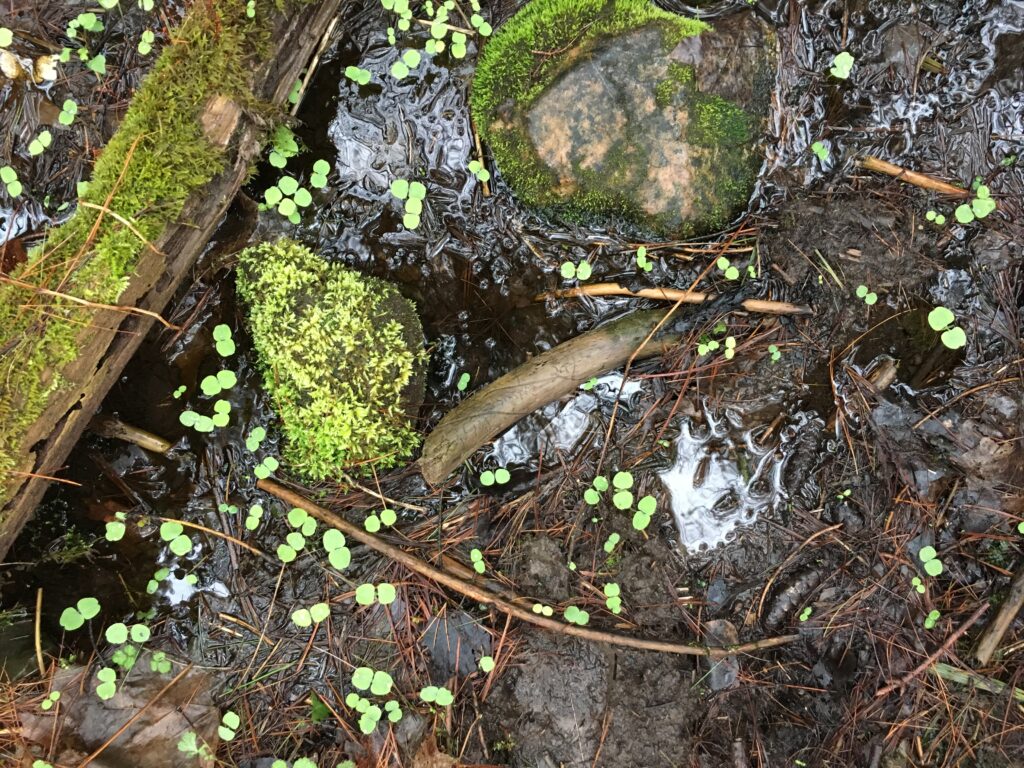
New growth sprouting from 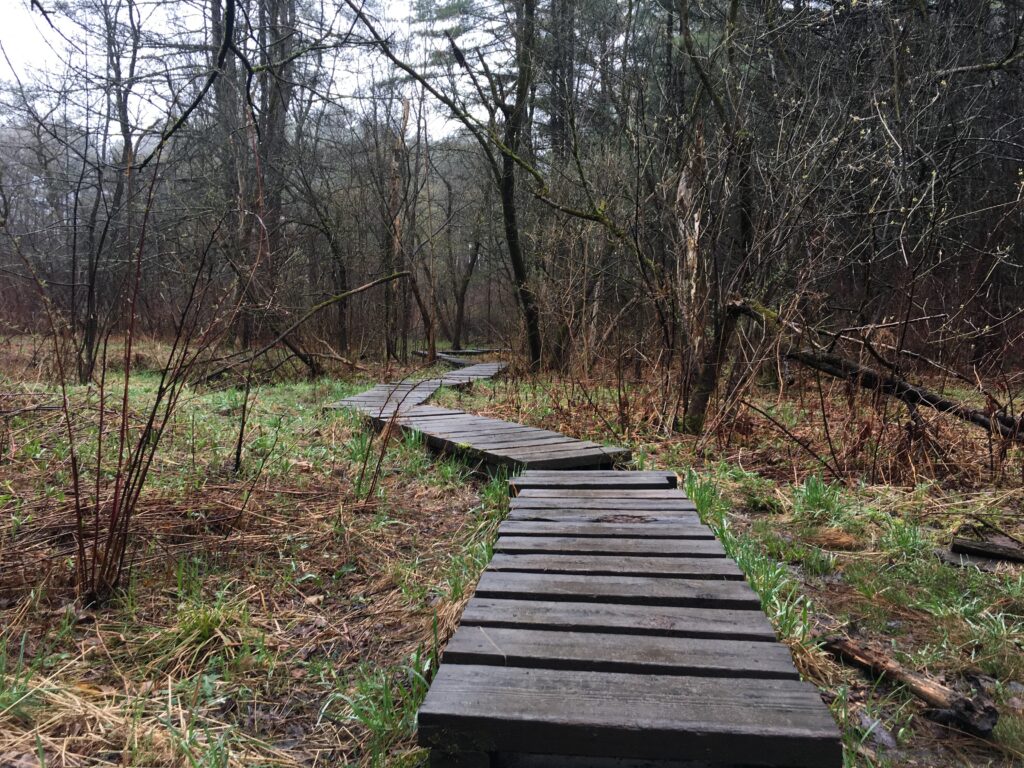
Path to my site 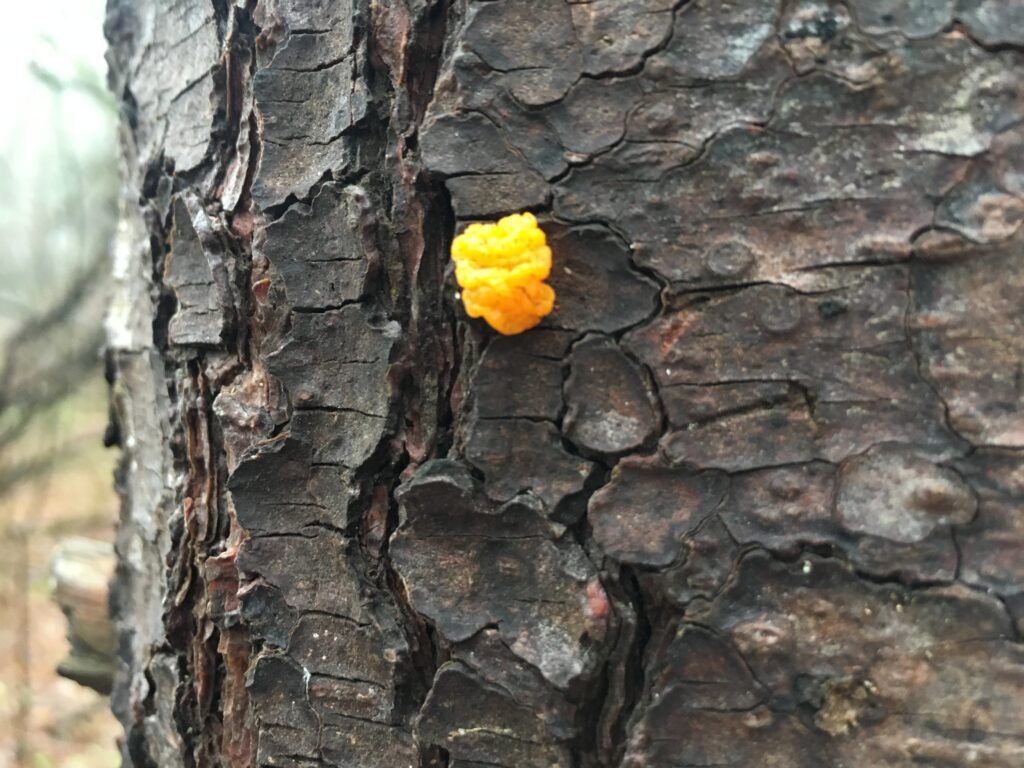
Orange fungus on Eastern White Hemlock 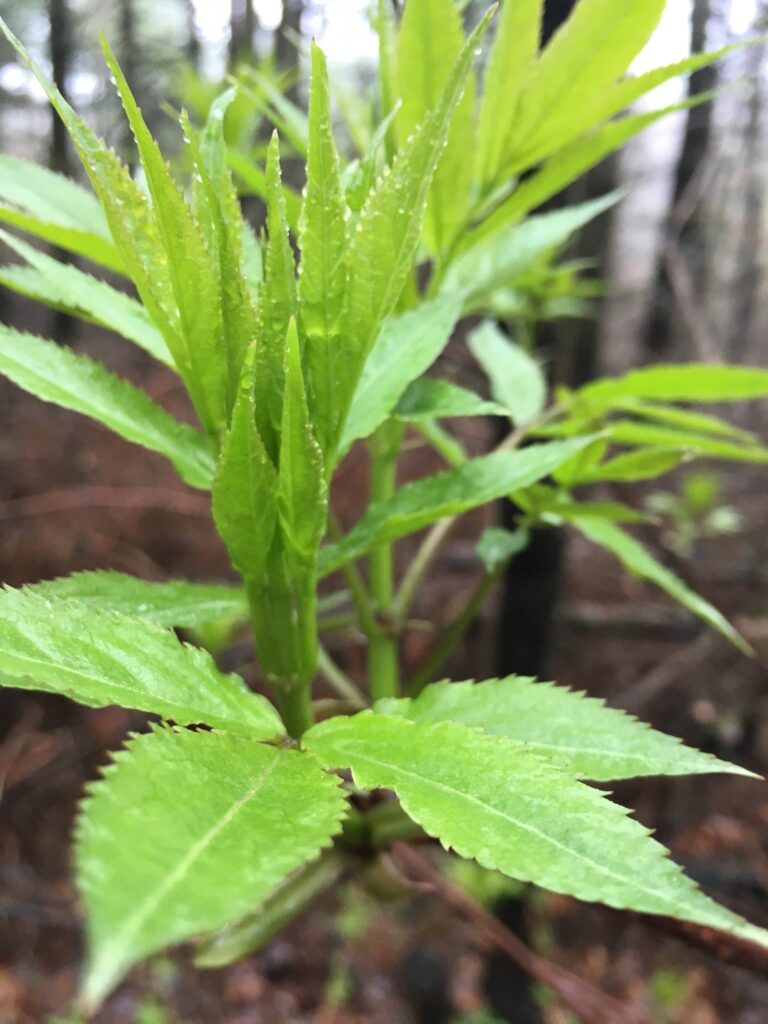
Green Growth
My last visit to my phenology spot made me hopeful for warm weather and phenological changes into summer.




This morning was my last visit to Centennial Woods for the year. When I picked this spot in the fall, it was foreign and unfamiliar. Over the past multiple months I learned the changes and secrets of the forest ecosystem. I have become a part of my the pine stand in Centennial Woods, visiting and observing the natural land. I have become proficient in identifying the trees and other biota in the area.
In Vermont, there is a large culture around saving natural areas. Centennial woods is one of the products of conservation in the state. People also care about the state of natural areas, which is one of the reasons that Centennial Woods is so free of trash and human products.
Next year, I am excited to come back and revisit my site.
All the snow is gone and warmer temperature have started a new era in the woods. Plant and animal life is making its was back to centennial woods after the long winter. Walking through centennial woods the other day I heard a variety of bird calls like chickadee, blue day and mourning dove. The sound from the steam is intense, moving lots of water into the watershed. The warmer temperatures and water flowing into the ground creates a perfect climate for buds to make their way out of the soil and for life to flow through the trees once again. When I was in centennial woods, I could see the tops of fiddle heads which will soon grow into a lush understory. Mushrooms had cultivated in the cold moist soil, decomposing the dead wood that was packed down by snow all winter. Vermont is a little behind on the transition into spring, thus no leaves of flowers have peaked their way out.
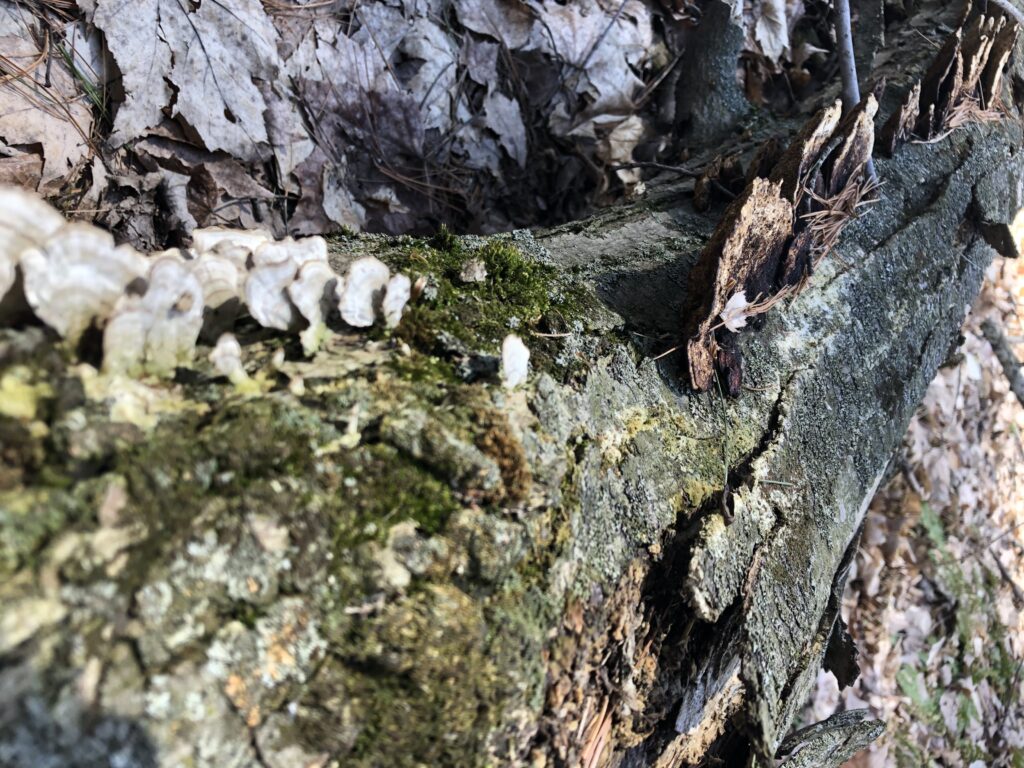
For the week off of classes, I left Burlington and went home to Massachusetts. I live a short bike ride from Plum Island, a small barrier island on the north shore. The island is known for its beaches and birding. I chose to have my phenology spot on one if the beaches on Plum island.
As you walk out to the beach there is a scrubby bush that looks like buckthorn that lines the boardwalk. The bush thins out as you get closer to the beach. Tufts of dune grass sway in the wind and soak up all the sun. My phenology spot bordered the dunes. Drift wood had landed on the beach along with seaweed and, unfortunately, a lot of plastic. While at my site, I saw lots of seagulls as well as a barred owl in the bushes farther from the beach.
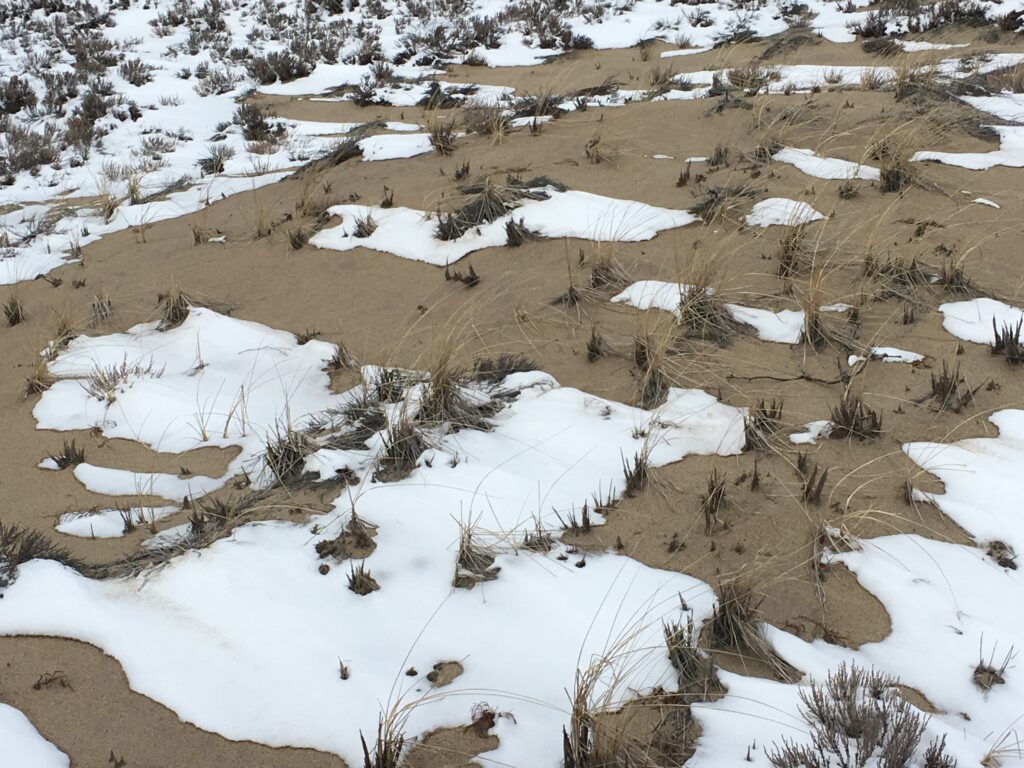
This site is a lot different from my site in Burlington. The land is clear of snow and it was warmer. The beach is clear of trees unlike my pine stand in Centennial woods.
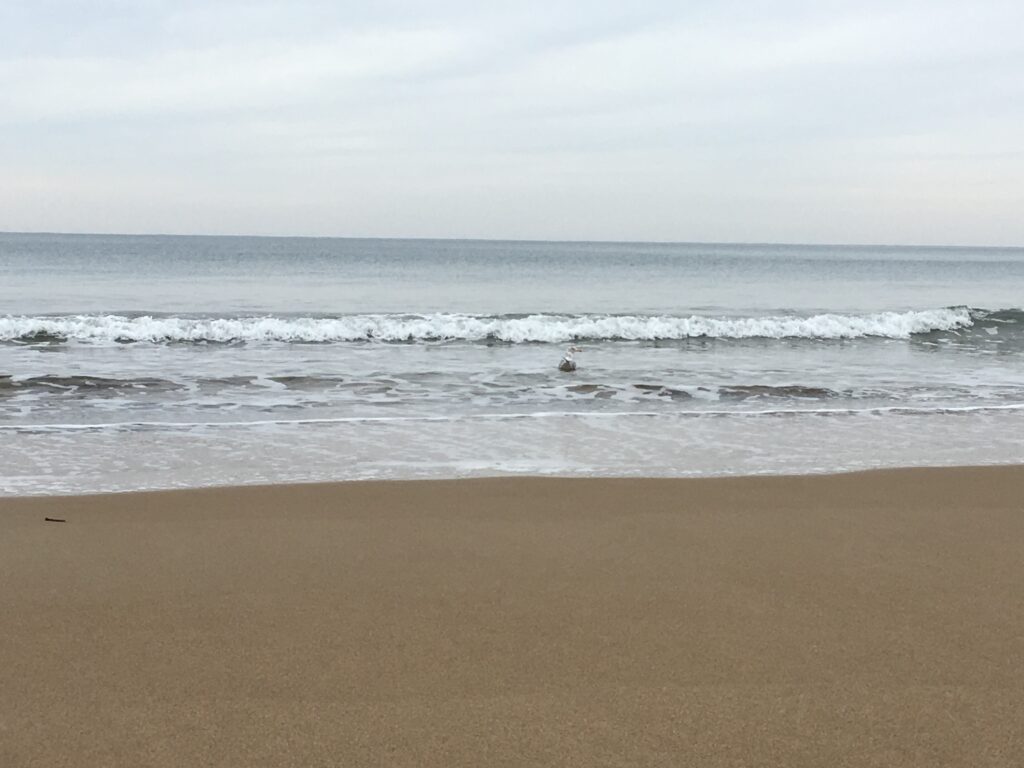
Upon returning to my site, I was greeted with more snow, muddy footprints and tracks on and off the trail. This time, as I spent the afternoon in my phenology site, my mission was to find a way to categorize my plot. Using the Woodland, Wetland, Wildland guild I was able to compare my site to those described and match it to the type of forest. First of all, I would say that my site is an upland forest that is abundant with white pines and some hardwoods. The ground is normally covered in pine needles and ferns in the warmer months. After looking through the guide, analyzing my site, and looking at maps, I decided that my site is an Oak-Pine-Northern Hardwood Forest. By the size of the majority of the trees and the dead wood on the ground I hypothesized that it is in mid to late successional vegetation.
Although we have moved into March, the snow is still piling up. I visited just after a fresh dusting, yet there were already human tracks and a few, what looked to be dog tracks. Over towards the brook I realized that I could hear water running. The water was flowing among the ice but at a slow meandering rate.
The past few days have been cold and snowy. It doesn’t seem like spring is coming. But when it does, I will begin to see more changes occurring in my site. More birds, mud, and the first signs of green vegetation are on the horizon!
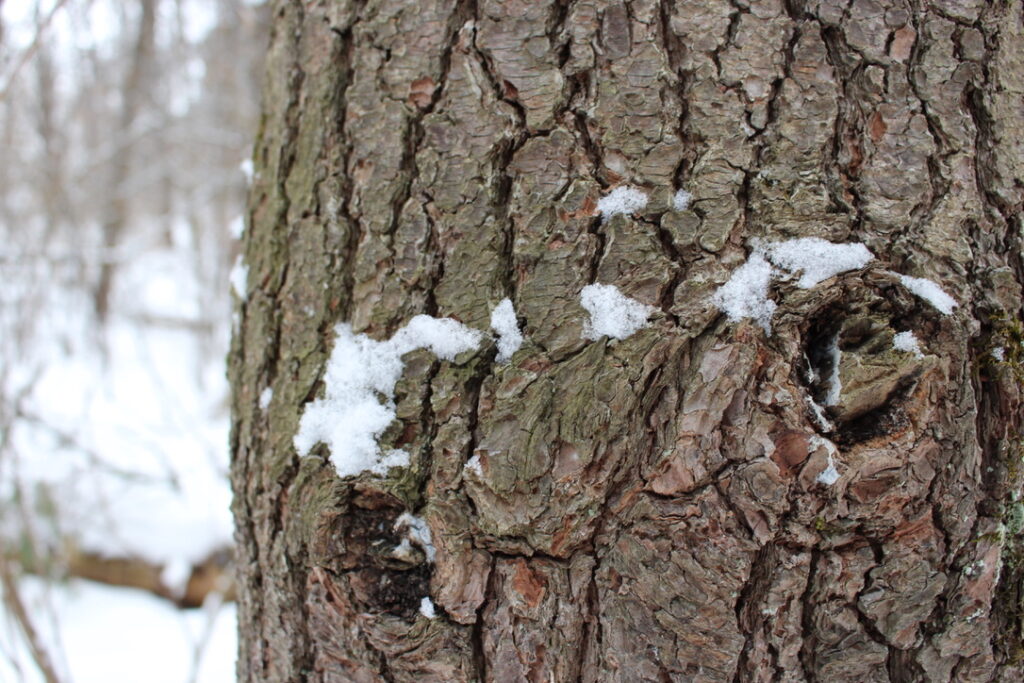
In class the past few days we have been looking into tracking animals in the snow. We learned different walks and prints of animals we can identify in the snow. During lab we tracked animal footprints which made finding footprints in my phenology site easier.
This semester I have decided to keep my phenology site in the same spot; the pine stand in Centennial Woods. While walking in Centennial woods this morning I kept a lookout for tracks in the snow. It had just snowed the night before so the light fluffy snow on top make it easy to identify tracks. At my phenology spot I found tracks made by a galloper. The tracks had two large prints in the front and two small in the back that were off set (not parallel). From what we learned in class, I predict this was a rabbit that made these tracks because is was a galloper with prints in a diagonal which means they are land dwellers. 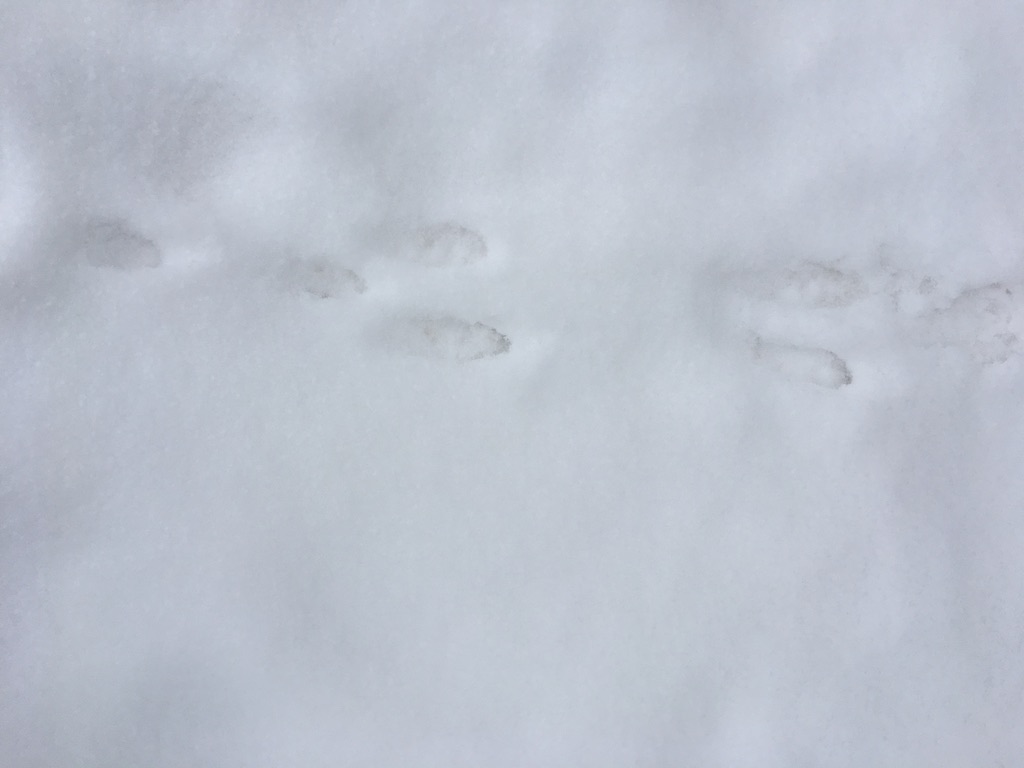
There were lots of older tracks around my site but they had been covered over by many inches of snow. The trail was also well traveled and I could tell there had been humans walking with snowshoes and possibly dogs with them.
My site looks a lot different than it did a few months ago; less leaves, more snow, and more fallen trees. All the evergreens are still holding onto their needles but the deciduous trees have dropped all their leaves. In my site I could identify two deciduous trees; an American Beech tree and a Paper Birch. These two are very easy to identify in the winter. The Paper Birch os easy to identity because of its unique white paper-like bark. The American Beech is easy to identify because they hold into their leaves instead of dropping them like most deciduous trees, these are called marcescence. Below is a twig I picked from the Beech tree. 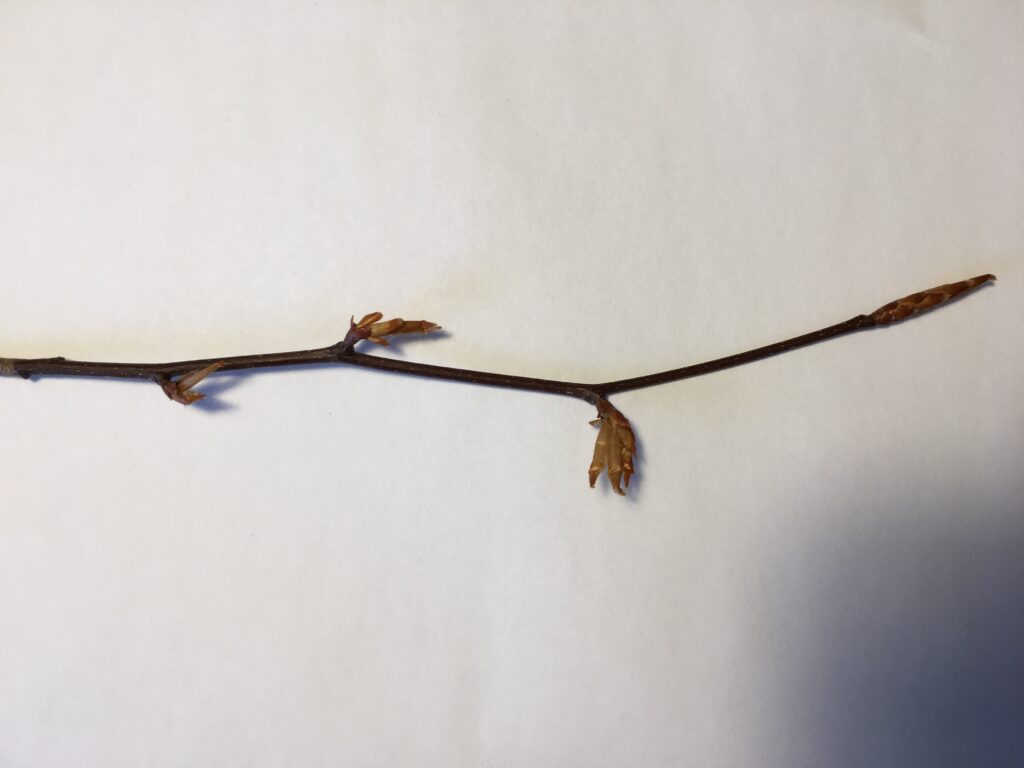
The snow is so beautiful right now, making my site look like a winter wonderland…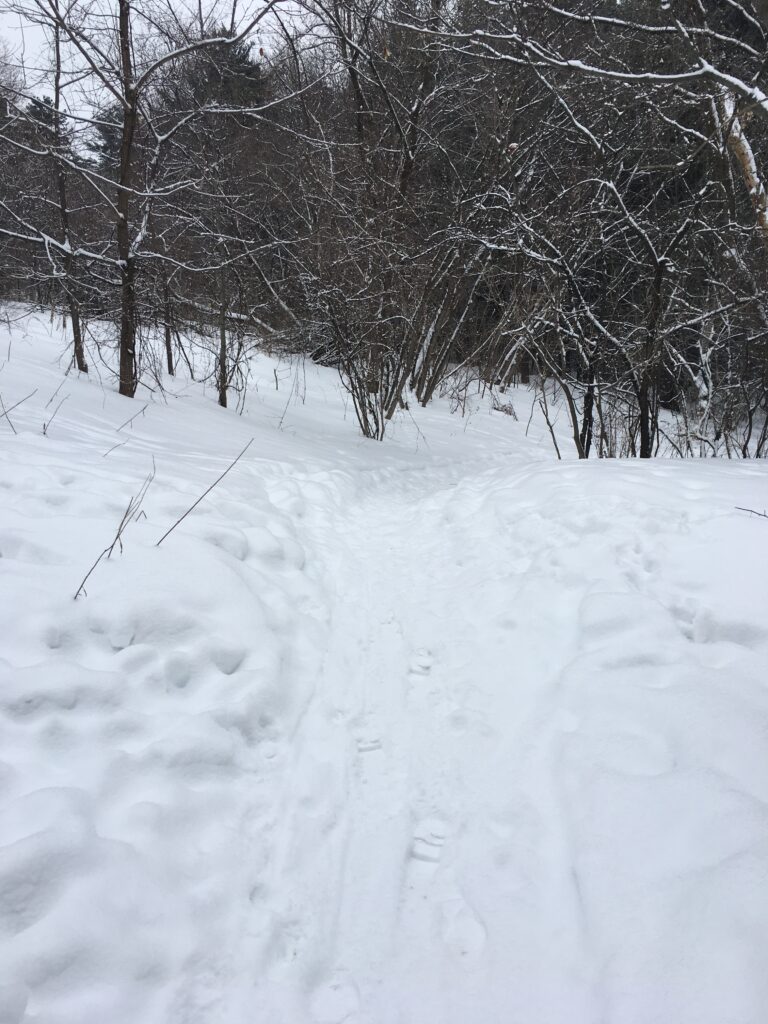
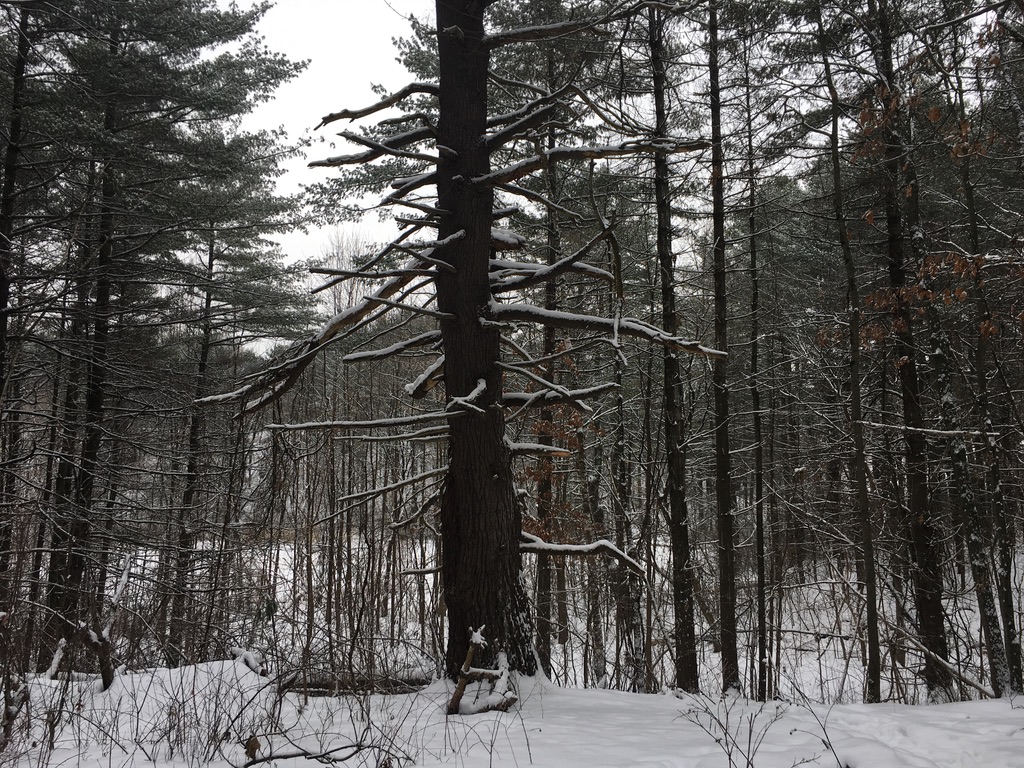
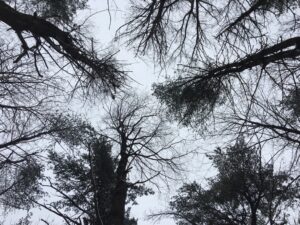
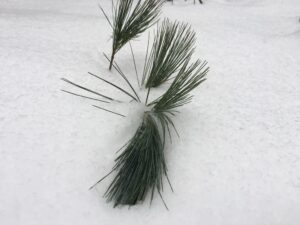
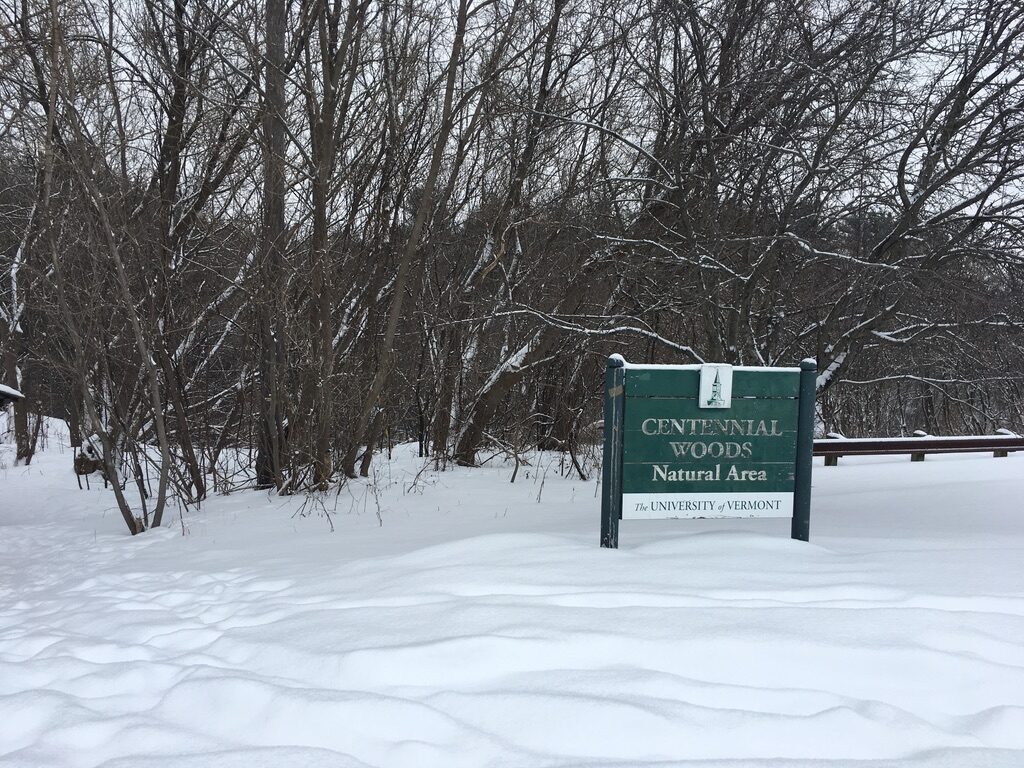
Learning the history of a place can tell us a lot about the current status of that land. We can read the landscape by learning the trees and their ages and species, and look for any signs of humans like barbed wire fencing or stone walls. Just by walking through Centennial Woods it is easy to tell that this is not an old growth forest; the trees are young and the species found (maples and white pines) indicate the age of Centennial Woods. Some parts of Centennial woods display this young growth more than others, yet it is apparent when looking though history books that this has not always been a forest. The plot that I have been studying holds some large pines look to be very old but surrounding forests are younger growth.
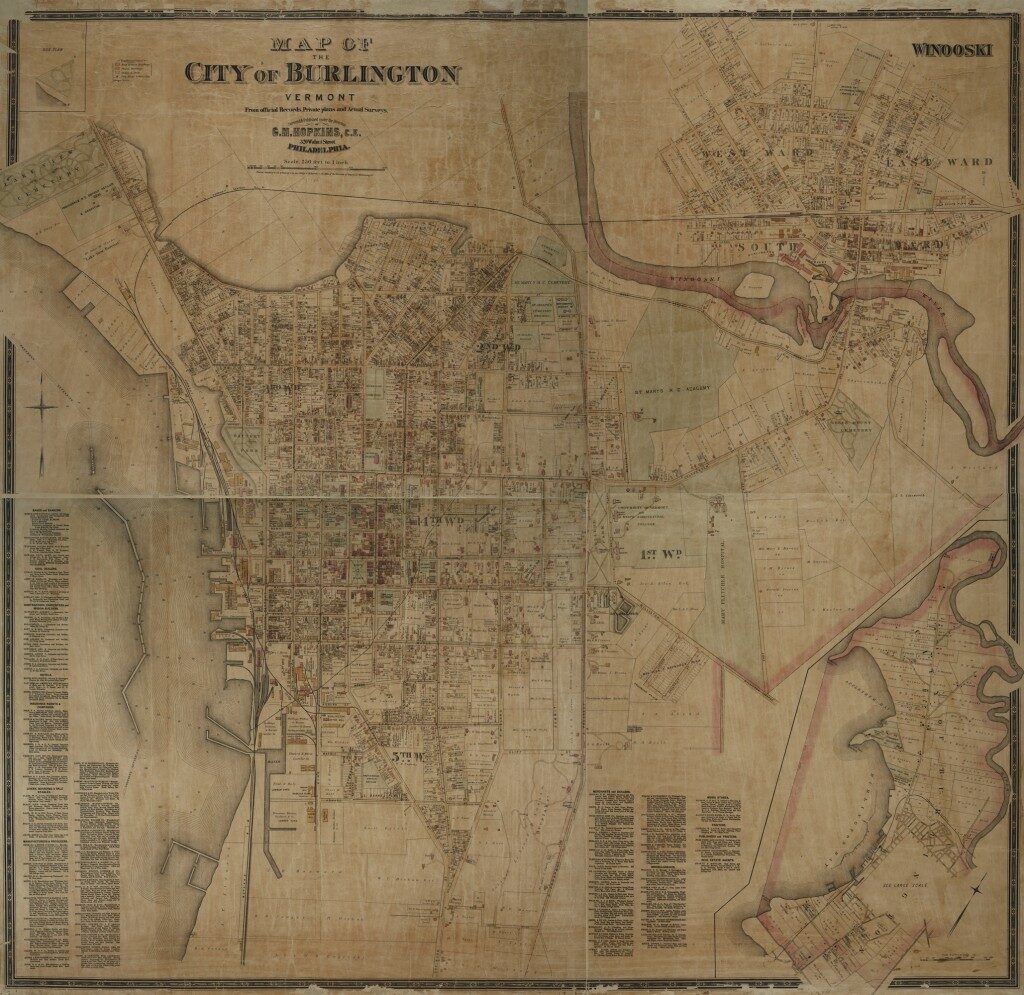
According to old maps of Burlington, Centennial Woods was previously owned by C. Baxter Est., H. Stevens, Hickok Est., and the Ainsworth family. The librarian at UVM special collections informed me that the land was used as agriculture. I can also tell that from the barbed wire that have grown into the old trees and the rock walls that you can find throughout Centennial Woods. The presence of white pine, in plots like mine, help me detect the development of the forest many decades ago. Whine pins are successional species that start to grow after pastures and fields have been abandoned. From the human signs and the growth of the forest, I can assume that Centennial Woods was mostly agriculture land.
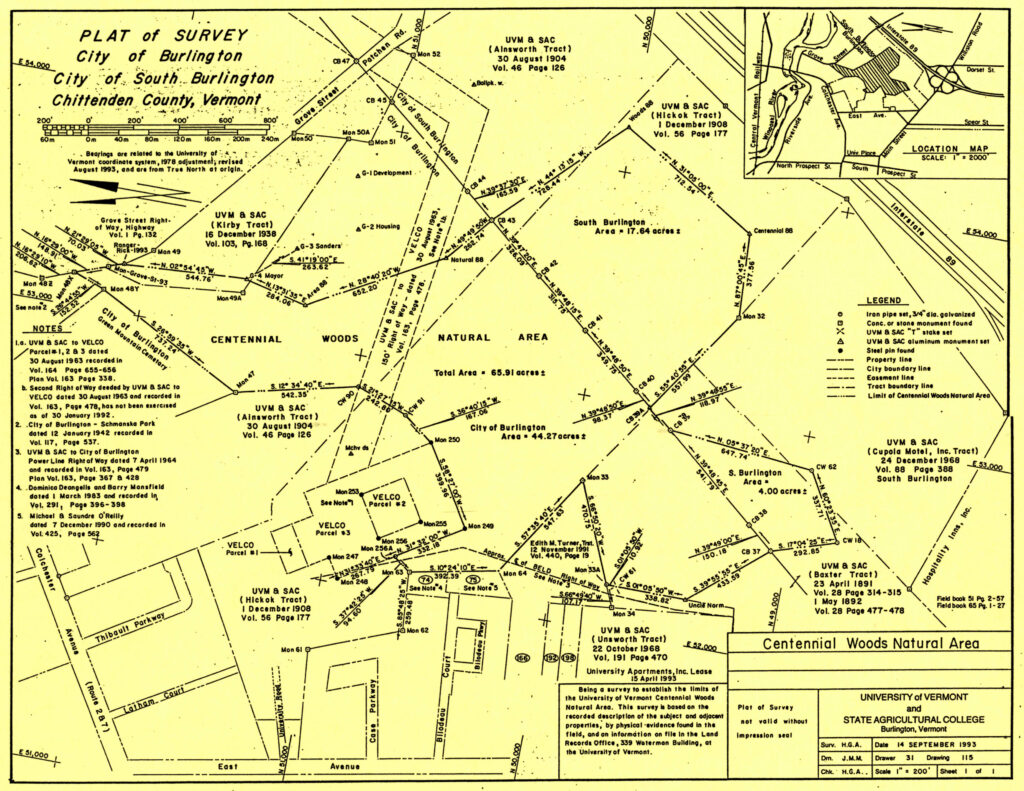
In more recent history, the University of Vermont purchased the land in 1974. The school utilized the land as a shooting range and outdoor educational classes. In the 1990s the land was changed to a natural urban area. Since then, it has been one of the biggest natural area in Burlington and has been a place for outdoor exploration for students and members of the community.
Citations:
Centennial Woods Natural Area. Burlington, VT: University of Vermont, 1993.
http://www.uvm.edu/~uvmsc/Centennial%20Woods/Centennial_Woods_Survey_1993.jpg (accessed December 02, 2014)
Hopkins, G. M. Map of the city of Burlington, Vermont: from official records, private plans and actual surveys. Philadelphia, Pa.: G.M. Hopkins, 1890.
http://cdi.uvm.edu/collections/item/Burlington_Hopkins_1890 (accessed December 02, 2014)
The Changing Landscapes of Centennial Woods Natural Area: A Field Guide [PDF]. University of Vermont Natural Areas. University of Vermont Environmental Program, http://www.uvm.edu/~uvmsc/Centennial%20Woods/Changing_Landscapes_Centennial_Woods002.pdf.
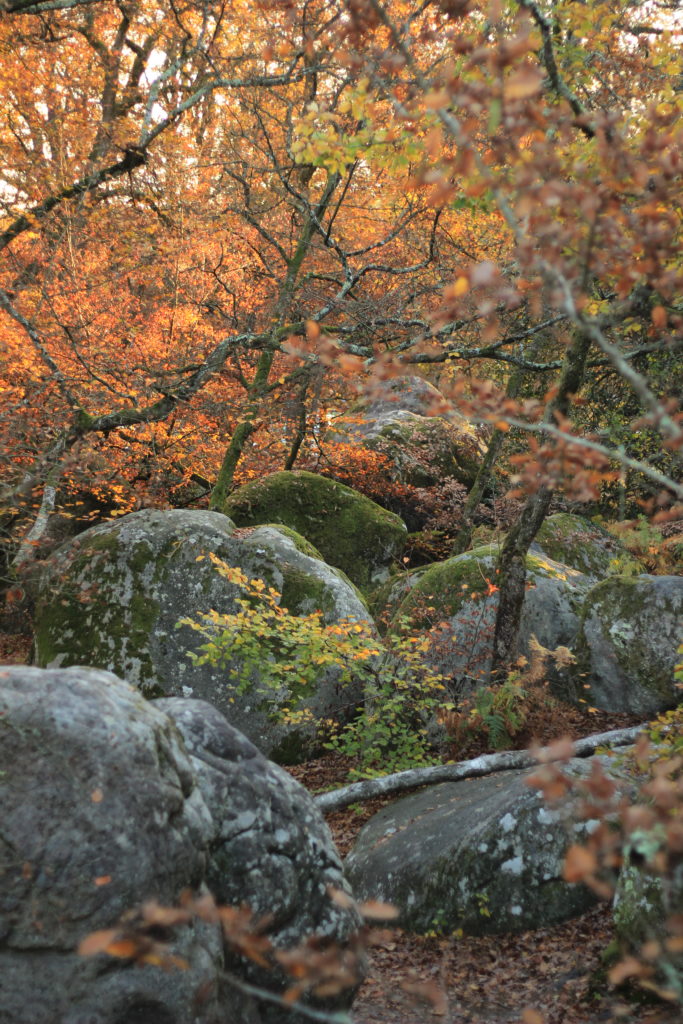
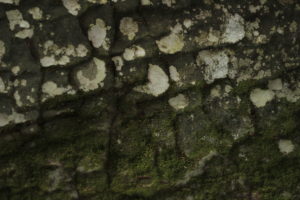
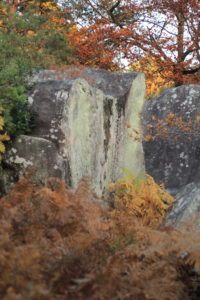
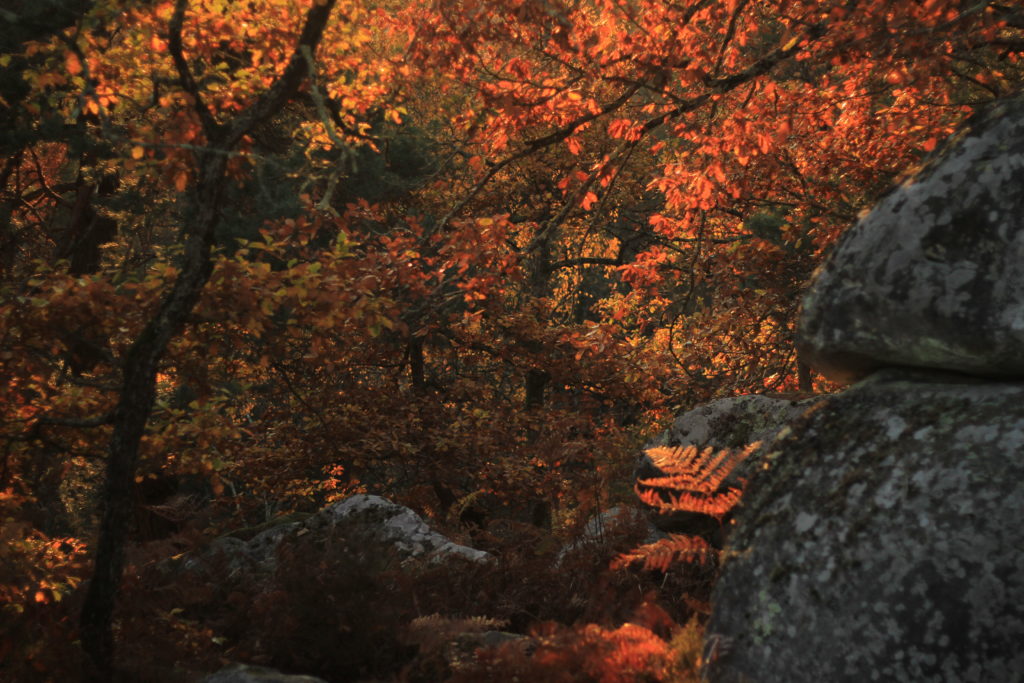
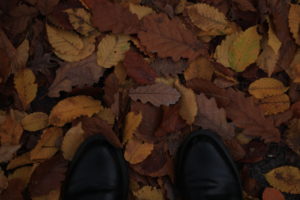
This week I traveled to France and found my phenology spot in the forests of Fontainebleau. The forest makeup was different from that of Vermont, making it interesting for me to explore, yet challenging to read the species and know the history of the land.
I was in France visiting family and spent some time in Fontainebleau. The forests were old hunting grounds for the kings up until the mid 1800s and then sectioned off as a nature preserve. This land holds deep history. Currently, the land is used for recreation; walking paths and some of the best bouldering in the world. These forests bring many visitors and tourists to rock climb or enjoy the amazing landscape that is famous in many nineteenth century paintings. Today, the bright orange and yellow leaves, large boulders, and open overstory were the main characteristics of this site. The trees are mainly deciduous trees along with few holly trees. There isn’t much of an understory in the plot that I explored, but there are some low bushes and grasses around. The canopy is about 40% cover, yet the leaves are falling, making the canopy look thinner. Growing on my site was a lot of oak trees, although not the ones that we studies in class, and European beech trees. At this time of the year the trees are displaying their bright orange and yellow pigments as the season changes to winter. While visiting the the forests I say lots of red squirrels and a some type of wild mountain cat. I also saw evidence of woodpeckers from holes in the trees. I would suspect there to be lots of live in this forest because of the secluded and healthy land. The bedrock is marine deposit and the large boulders are evidence of glaciers moving though the land and leaving behind large boulders. I chose this plot because I was spending time climbing the the forest and fell in love with the land and what is has to offer. Learning the history and exploring the land was really fun to do.
Fontainebleau is over 3,000 miles from Burlington Vermont. My site in Burlington is a pine stand, with large old pines and it used to be a farm. Evidence from tree scaring, barbed wire, and new growth shows that is used to be a farm. In Fontainebleau, the land was once used for hunting land but as far as I’ve researched, it was never farm or inhabited land. Since the mid 19th century, the land has been saved to from any development, and preserved as natural land. Currently in Fontainebleau, there are hundreds of walking paths and it is known as one of the best rock climbing bouldering area in the world. It brings lots of climbers like myself to try out the famous climbs. My plot in Burlington has gone in and out of natural land; staring as natural land, moving to farmland, then recreation for the University of Vermont, and now preserved land. There are also walking paths in Centennial woods but does not see as much traffic. The species that live in both plots are not drastically different or opposites, but there are not many that overlap. In Fontainebleau there are a lot of beech trees and oak trees, plus the occasional understory of holly, ferns, or tall grasses. My plot in Vermont has mostly pines with some beech trees and lots of ferns. The biggest difference what the progression in season. In Vermont the leaves had their peak colors over three weeks ago, but in Fontainebleau the peak colors are in display now. There are still leaves on the trees and the weather is warmer than Vermont with less rain. Most of the deciduous trees in my Vermont phenology site have already dropped and the ferns have shriveled up for the winter and have been crushed by snow.
https://drive.google.com/open?id=1K1dDgIENOBgmph-RTUkAM-u69saoH4rw&usp=sharing
the sun has left
and the clouds have moved in
dark pine bark
moistened by the rain
the sun has left the leaves
and they have fallen
to the ground
littered with pine needles
the sun shines lower
and leaves a cold forest
getting ready for the winter
and snow to arrive
soon,
the sun will shine on the snow
and reflect up onto the trees
birds will make marks in the snow
looking for berries that fell from the storm
but until now,
the sun is lost in the dark leaves
and the mushrooms thrive
in the moist wet ground
breaking down organics in to an acidic soil
Changes in season lead to changes in the landscape. The days are cooler and nights are longer. It has been rainy and grey with almost no sun. The pine stand in centennial woods has undergone changes since last time I visited. The ferns are all a yellow grey color and shriveled up, although the mushrooms still grow in abundance. The white pine trees are still lush with green pine needles because they are evergreens and don’t shed their foliage. But the deciduous trees in the stand are almost all bare like the yellow birch and red maple. The American beech however, are marcescence trees which means their leaves die in the winter but the tree does not drop the dead trees. The old dry leaves of the American beech color the forest’s midstory.
I visited my site on Sunday November 4, a sunny yet cold and windy day. The sun shone through the branched but the sun came from a lower point. We changed the clocks back, moving into winter, which means the sun is lower in the sky and we won’t be seeing much of it. My visit was quiet except for the chickadees and occasional blue jay screech. The ground was moist and the forest was filled with the smell of decomposing organic matter.